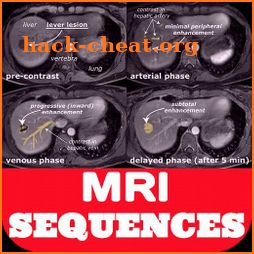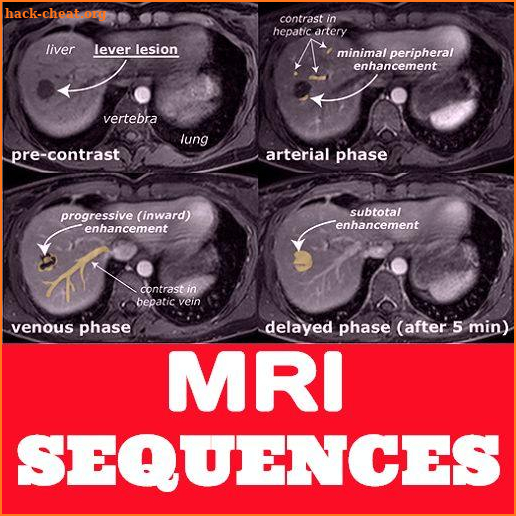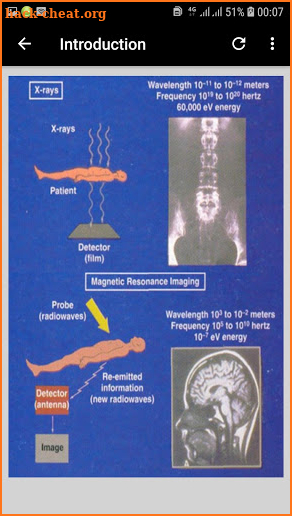

| For Android: 4.1 and up | Guide: Magnetic Resonance Imaging Sequences cheats tutorial |
| When updated: 2019-05-12 | Star Rating: 5 |
| Name: Magnetic Resonance Imaging Sequences hack for android | Extension: Apk |
| Author: Medical Apps For Doctors | File Name: com.radiography.mrisequences |
| Current Version: 1.0 | User Rating: Everyone |
| Downloads: 100- | Version: mod, apk, unlock |
| System: Android | Type: Education |




Watch Cardiac Magnetic Resonance Imaging (MRI) Basic Principles (Dipan Shah, MD) Sep. 29, 2015 video.

Watch What is a Magnetic Resonance Imaging (MRI) scan? video.

Watch MRI Sequences video.

Watch Introducing MRI: Introduction to Pulse Sequences (30 of 56) video.

Watch Introducing MRI: NMR Contrast (12 of 56) video.

Watch MRI Brain Sequences - radiology video tutorial video.

Watch MRI Sequences in a easy explanation video.

Watch Body MRI Sequences Made Ridiculously Simple video.

Watch Introducing MRI: The Gradient Echo Pulse Sequence and Modified Flip Angle (34 of 56) video.

Watch Introducing MRI: Diffusion Imaging (49 of 56) video.

An MRI sequence is a number of radiofrequency pulses and gradients that effect in a set of photos with a particular appearance. This article presents a simplified approach to recognizing common MRI sequences, but does not concern itself with the particulars of each sequence. abdominal mri sequences abdominal mri sequences radiology acronym mri sequences adni mri sequences advanced mri sequences all mri sequences ankle mri sequences aortic dissection mri sequences avascular necrosis mri sequences MRI Sequences MRI Signal production MRI Interpretation MRI Pulse Sequences T1, T2, PD weighted Imaging Spin Echo Fast and Ultrafast MRI Fast (Turbo) Spin echo Inversion recovery sequence STIR Sequences FLAIR Sequence Greadient sequence 3d greadient echo Echo planar imaging sequence Dynamic imaging basic mri sequences radiographics blade sequence mri blood mri sequences blood sensitive mri sequences Functional Imaging (fMRI) Diffusion weighted imaging (DWI) MR Spectroscopy Magnitization transfer (MT) MRI MRA & MRV MR Perfusion Susceptibility weighted imaging T1 rho imaging Fat Suppression imaging SPAIR SPIR Signal to noice ratio Radiofrequency (RF) coils Water excitation and Dixon Method MRI Abbreviation Overview The simplest method to think about the multitude of sequences accessible on modern scanners is to divide them according to the dominant influence on the appearance of tissues. This leads to a division of all sequences into proton density (PD) weighted, T1 weighted, T2 weighted, diffusion weighted, flow sensitive and 'miscellaneous'. A number of 'optional add-ons' can also be considered, such as fat or fluid attenuation, or contrast enhancement. This leads to a broad categorisation as follows: T1 gadolinium enhanced fat suppressed T2 fat suppressed fluid attenuated susceptibility sensitive proton density fat suppressed diffusion weighted flow sensitive MR angiography MR venography CSF flow studies miscellaneous MR cholangiopancreatography (MRCP) a unique T2-weighted sequence MR spectroscopy MR perfusion functional MRI tractography Terminology Intensity When describing most MRI sequences we refer to the shade of grey of tissues or fluid with the word intensity, leading to the following absolute terms: high signal intensity = white intermediate signal intensity = grey low signal intensity = black Often we refer to the appearance by relative terms: hyperintense = brighter than the thing we are comparing it to isointense = same brightness as the thing we are comparing it to hypointense = darker than the thing we are comparing it to Annoyingly these relative terms are used without reference to the tissue being used as the comparison. In some instances this does not lead to any issues; for example, a hyperintense lesion in the middle of the liver is clearly hyperintense compared to the surrounding liver parenchyma. In a lot of another situations however use of relative terms leads to potential confusion. Imagine a lesion within the ventricles of the brain described as "hypointense". Does this denote a lesion darker than CSF or than the adjacent brain? As such it is preferable to either use absolute terminology or, if using relative terms, to acknowledge the comparison tissue e.g. "the lesion is hyperintense to the adjacent spleen". NB: the word density is for CT, and there are few better methods to present yourself as an MRI noob than by making this mistake.



 FamilyTable
FamilyTable
 Connector · Cocktail Recipes
Connector · Cocktail Recipes
 MealyAI
MealyAI
 WalaOne | ولاء ون
WalaOne | ولاء ون
 Pocket Life: Dress Up & Decor
Pocket Life: Dress Up & Decor
 Craft World: Sahur Horror
Craft World: Sahur Horror
 Catch and Feed
Catch and Feed
 Amoria: Random Chat & Dating
Amoria: Random Chat & Dating
 Hidden Quest: Seek & Discover
Hidden Quest: Seek & Discover
 Stretch Weather - Watch face
Stretch Weather - Watch face
 Midjourney - AI Art Generator Hacks
Midjourney - AI Art Generator Hacks
 Liveguide Maps Hacks
Liveguide Maps Hacks
 ToolRides Conductor Hacks
ToolRides Conductor Hacks
 Brave Lady Hacks
Brave Lady Hacks
 Line 98 Standard: Color Lines Hacks
Line 98 Standard: Color Lines Hacks
 YieldNodes Official Client Hacks
YieldNodes Official Client Hacks
 Frontline Insurance Hacks
Frontline Insurance Hacks
 urpay Hacks
urpay Hacks
 CFFCU Mobile Banking Hacks
CFFCU Mobile Banking Hacks
 Pediatric IV Fluid Calculator Hacks
Pediatric IV Fluid Calculator Hacks
Share you own hack tricks, advices and fixes. Write review for each tested game or app. Great mobility, fast server and no viruses. Each user like you can easily improve this page and make it more friendly for other visitors. Leave small help for rest of app' users. Go ahead and simply share funny tricks, rate stuff or just describe the way to get the advantage. Thanks!
Welcome on the best website for android users. If you love mobile apps and games, this is the best place for you. Discover cheat codes, hacks, tricks and tips for applications.
The largest android library
We share only legal and safe hints and tricks. There is no surveys, no payments and no download. Forget about scam, annoying offers or lockers. All is free & clean!
No hack tools or cheat engines
Reviews and Recent Comments:

Tags:
Magnetic Resonance Imaging Sequences cheats onlineHack Magnetic Resonance Imaging Sequences
Cheat Magnetic Resonance Imaging Sequences
Magnetic Resonance Imaging Sequences Hack download